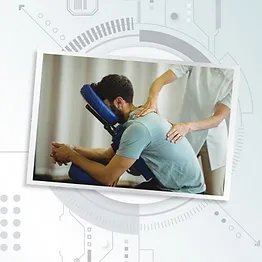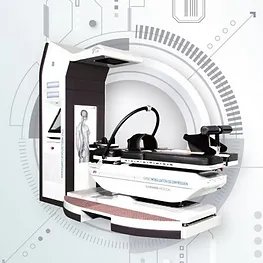Sciatica
Pain Symptoms
Headache Symptoms
Shoulder & Neck Pain
Spine & Joints
- Disc-herniation
- Scoliosis
- Sciatica
- Back Pain
- Ankylosing Spondylitis
- Osteoporosis
- Pregnancy Pain
- Bone Spur
Upper Limbs
Lower Limbs

What you need to know about sciatica
The sciatic nerve is the largest nerve in the body, formed by spinal nerve roots L4, L5, S1, S2, and S3. Irritation of the sciatic nerve can lead to pain that radiates from your low back to your buttock and down the back of your leg. Some people with sciatica will experience numbness, tingling or muscle weakness.
Don’t underestimate sciatica: it may cause paralysis
- A mild to severe pain in the lower back, buttocks and legs.
- Numbness or weakness in the lower back, buttocks, legs or feet.
- Intensified pain when moving; impaired mobility.
- Tingling sensations in legs, toes or feet.
- The changes in posture may aggravate or alleviate the pain. Sciatica pain may intensify when patients sit, try to stand, stand for a long time, bend forward, twist the spine and/or cough. The pain may be relieved when patients walk, apply a warm compress to the back of the pelvis or do pelvic exercises.
The pain starts at the buttock and extends down the back of the calves to the instep and feet. If patients neglect the condition, it may lead to atrophy of leg muscles and weakness in the ankles, hindering the functions of walking, urination and defecation. Some severe patients may even experience paraplegia or require surgical treatment.
Since patients with prolonged sciatica experience long-term compression of the cauda equina, their perineum may become numb and hinder urination or defecation. Severe patients may experience paraplegia and even incontinence when the condition worsens, significantly hampering daily activities and self-care abilities. Although sciatica is not a disease but a symptom caused by other diseases, it can also greatly affect our health and daily lives. Therefore, we should never underestimate the early symptoms since delayed treatment may bring terrible results.



What is the cause of sciatica?
Sciatica is the result of a series of injuries, mostly due to other diseases or torn body tissues which impair the functions of spinal joints. Prolonged poor postures, sports injuries, accidents, strain from work, etc. can all lead to sciatica. Other conditions such as spinal subluxation, bone spurs, spinal stenosis, annular tear in the cartilage or disc herniation may also cause nerve compression and lead to sciatica. Unusual causes are compressed nerves by tumours and damaged nerves due to diabetes. The following four groups of people are at higher risk:
- Sedentary white-collar workers, especially those aged from 30 to 50
- People who are chronically physically inactive or do not warm up before exercise
- Elderly people with previous bone diseases
- Overweight and obesity which exert pressure on the spine
Find the right treatment for sciatica
Chiropractors will diagnose sciatica by asking the patients about their medical history and daily habits, and performing tests for lower limb muscle strength and X-ray examination. Therapists will first carry out clinical examinations for sciatica to determine the degree of the condition. If the patient’s condition is complex, for example, with the presence of disc herniation and spinal stenosis, magnetic resonance imaging (MRI) may be required for diagnosis. If chiropractors can identify the factors contributing to the pain, they will target the cause and decide on the treatment methods accordingly. For example, patients with a hip subluxation may consider receiving chiropractic adjustment which utilises the lever principle to quickly and easily adjust the spine.
Chiropractors treat sciatica with non-pharmacological therapies. They use professional techniques to adjust the spine in a natural, convenient and pain-free way to relieve the pain. Besides manual therapy, professional therapeutic devices are also used to alleviate patients' pain.
Spine traction therapy:Patients with lower back stiffness can use 3D spinal traction machines to relax and twist the spinal curves for adjustment. Our traction machine is connected to a computerised system to adjust the appropriate amount of traction force for each patient. The machine’s 3D dynamic mechanism can adjust the spine through rotation, relaxation and traction to relieve the pain caused by nerve compression.
Spine and physiotherapy:Electromagnetic field, electrical stimulation, hot compress, short waves, interferential current etc. will be used to treat sciatica. These treatments can relax muscles and relieve nerve compression. They may also be complemented by other pain relief stretches or daily exercises to facilitate recovery. Yet, patients should follow their therapists’ instructions to avoid irritating the nerves with poor or wrong postures which can worsen the condition.
Spine and physiotherapy: Electromagnetic field, electrical stimulation, hot compress, short waves, interferential current etc. will be used to treat sciatica. These treatments can relax muscles and relieve nerve compression. They may also be complemented by other pain relief stretches or daily exercises to facilitate recovery. Yet, patients should follow their therapists’ instructions to avoid irritating the nerves with poor or wrong postures which can worsen the condition.
Most pain sufferers are satisfied with their recovery progress after receiving a diagnosis and non-surgical treatment for weeks or months. Of course, each patient has different conditions and degrees of pain, therefore the therapeutic effects also vary accordingly. It is recommended to receive regular spine examinations every six months to facilitate early treatment of sciatica symptoms.
How to prevent sciatica?
- Practise correct posture when standing, sitting and sleeping to minimise pressure on the lower back.
- Lose weight to reduce the pressure on the nerves.
- Quit smoking since smoking may cause disc herniation.
Sciatica FAQ
Is walking or resting better for sciatica?
Walking is a surprisingly effective way to relieve sciatica pain since frequent walking can stimulate the release of pain-relieving endorphins and reduce inflammation. Yet, please note that poor walking posture may intensify the pain.
What will make sciatica pain worse?
Prolonged sitting will worsen sciatica since it compresses the sciatic nerves running through the buttocks. Therefore, many doctors advise patients to stand when pain occurs.
What postures are bad for sciatica?
Lying on the back or stomach will increase the risk of lower back pain as these postures will exert pressure on the facet joints in the back of the spine. If you usually sleep on your back, try to raise your knees a little bit.
How long does sciatica last?
Sciatica normally cannot be cured on its own. If the pain is severe or persists for more than 6 weeks, you should seek help from medical professionals to target the cause and treat the pain timely and properly.
Is bed rest good for sciatica?
Bed rest is necessary to relax and recover back muscles and reduce pressure on the lumbar spine. However, sciatica cannot be completely cured by bed rest and should be treated with the help of medical devices.



